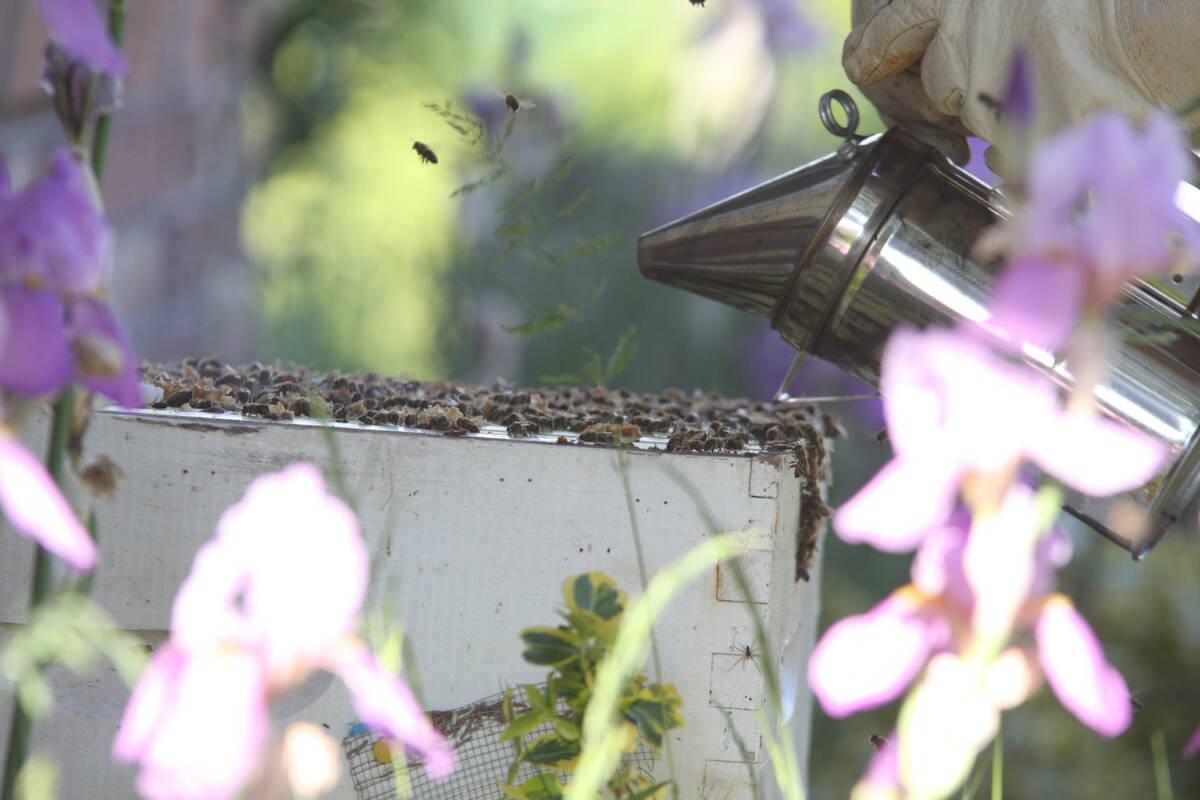One year of research data in Alberta finds that it is best to roll fields when the crop is at the one- to three-leaf stage
There’s nothing like putting a rock through the combine or silage chopper to ruin a farmer’s day and delay harvest.
Rolling the field earlier in the season to push down rocks and soil clods reduces the risk of that event but timing is important, said Trevor Deering, research associate with Farming Smarter. The benefit of rolling to limit erosion is another consideration.
His study on timing to roll barley fields showed it is best done when the crop is at the one- to three-leaf stage. Rolling the field after that has higher risk of affecting yield, at least according to one year of data in his test plots.
Read Also

Manitoba beekeepers battle for survival
Honeybee colony losses have hit 43 per cent, making 2025 the latest in a string of poor bee survival years for Manitoba’s honey producers
In the trial, irrigated barley was rolled with one pass at one of six growth stages: immediately after seeding, first leaf, second leaf, third leaf, fourth leaf and one node.
“It seems … rolling anytime into the one- to three-leaf stages would maximize our yield potential and decrease erosion and give us that window where we need to roll and not get into that (first) node. If we are rolling into the fourth leaf, that gives us a little bit more buffer but we don’t want to just rely on that fourth-leaf stage to roll all of our fields.”
Deering said barley rolled at the one-node stage remained stunted throughout the season and also had more spot blotch and net blotch, “likely resulting from the damage that we did to the crop at that critical growth stage.”
All plots yielded similarly, he said, but the crop rolled at the one-node stage had lower protein and lighter kernel weight than the plots rolled at other stages.
If the main goal is to limit erosion, Deering said rolling right after seeding increases risk because of low plant cover. Risk is also higher if rolling at first leaf, for the same reason.
“The two leaf to the one node would offer the least potential for erosion. The first node timing should be avoided, though, due to the increase in disease potential, stunting, and potentially lower feed and seed quality.”
Deering said one year of data is not enough to provide guidance on how different timings can affect yield but the results did provide useful data.
“We set out to assess the effects of rolling barley on plants at different plant stages to find out how much, if any, damage is occurring and to establish a window for rolling that may help in planning other field operations so that they don’t interfere with one another.
“Our curiosity has definitely been ramped up.”
















